秩父鉄道,西武鉄道
西武鉄道の新型特急「LaView」として2019年3月16日に華々しいデビューを飾った西武001系電車。
「Laview」の名には、
L「Luxury-贅沢-」な「Living -居間-」
a 「Arrow-矢-」のような速達性、
view 大きな窓からの「View-眺望-」
という意味が込められている、らしい。
西武鉄道が、レッドアローの後継として社運をかけた新型特急である。
そして、まさかのあいおえお作文である。
車両のデザインコンセプト画を始めてみたときは、銀色の魚肉ソーセージ(または大人のオモチャ…)にしか見えなかったが、
改めて実車を見てみると銀色のボディは鈍く輝いていてかっこいいのだ!
デザインと監修は建築家の妹島和世氏が手がけたそうな。
おー!やっぱりそうだったか!やっぱりイモジマさんは格がちげーわ。(せじまさんです)
このまるで高級車のようなイカした銀色は、ステンレスの地金の色ではなく、
自動車のアルミホイールなどに使われる大日本塗料社製の高輝度金属調塗料「スーパーブライトNo.2000」が採用されている。
おー!やっぱりそうだったか!やっぱりスーブラは格がちげーわ。
車内の方は、流石、西武が社運をかけた新型特急だけのことはあり、清潔感と高級感がある。
思わず、ここはカッシーナのショールームですか?と錯覚してしまう。
あまりのおしゃれインテリア感に、コンビニの袋からアサヒスーパードライと笹かまを出すのをためらったほどだ。

最大の売りである側面窓は天井一杯の高さから膝下まで開口しており開放感は抜群。
陽射しの強い日はサイドからプリーツカーテンを引いて遮光することができる。
この長いカーテンも、鉄道にはあまりお目にかかれないシロモノだ。
思わず、ここはサンゲツのショールームですか?と錯覚してしまう。
シートは萌黄色のような若草色のような鶸色のような、明るい黄がちの黄緑色をしている。
車内のテキスタイルデザインは安東陽子氏が手がけている。
おー!やっぱりそうだったか!(以下略)

西武秩父に到着。駅名票のは明朝体風のフォント。
高輪ゲートウェイとか、高尾山口とか、最近の洒落オツ感のある駅では明朝体のフォントが増えている気がするが、
このフォントはどことなく本格タイプの中華料理店のメニューっぽい気がするのは僕だけだろうか。
またもや駅前で変なドリンク発見。
その名もスパークリング米麴甘酒。もちろん飲んでみました。
うーむ。。。想像を超えない味、いや、絶妙なゲロマズ風味ですね☆
・・・ドリンクのことは忘れて、西武秩父から徒歩数分のところにある秩父鉄道御花畑駅を目指します。


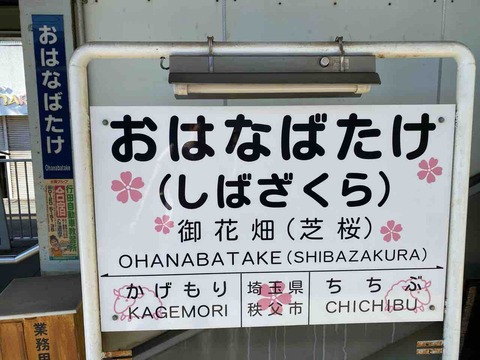
御花畑駅の駅名標四種盛り。
こうして四連チャンで並べてみると頭の中がおはなばたけになったようです。
ここから終点の三峰口まで乗車します。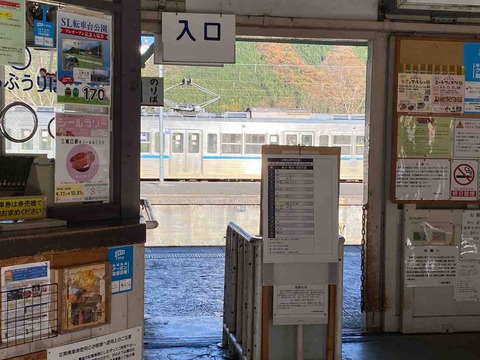


三峰口到着。留置線には元・都営6000形の現・秩父鉄道5000系がいました。
こちらは元・西武の新101系の現・秩父鉄道6000系。
急行ガリガリ君エクスプレスのヘッドマークが取り付けられていた。へぇ〜。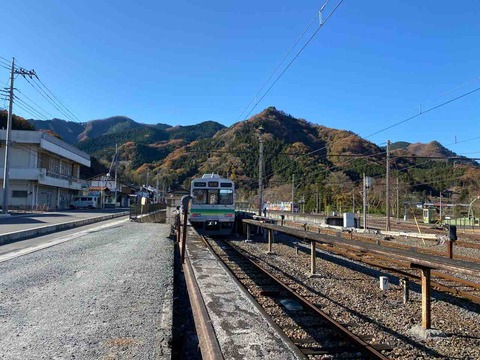
駅の東側にある洗車台。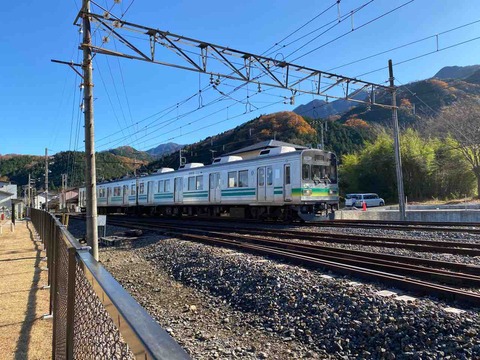
駅周辺を散策していると、7800系が入線してきた。こちらは大井町線で使用されていた元・東急8090系である。
ここも中古車天国である。
駅の北側に位置するSL転車台公園。


SL転車台。パレオエクスプレス運転日には、至近距離で機回しを見ることができる。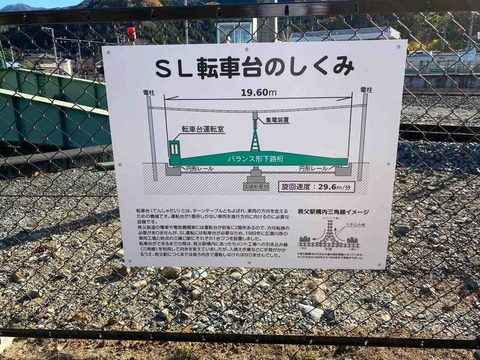
転車台の能書き。
駅の西側に歩くと、荒川にかかる道路橋白川橋がある。
そういえばこの日、10人くらいのテレビクルーの集団が橋の歩道を塞いで撮影をしていた。
邪魔くさいったらありゃしない。
あとなんかその中にいた芸能人がカメラ回ってないところですごく偉そうで嫌な感じだった。
とかなんとかブチギレつつも・・・
橋からの眺望を楽しんじゃったりなんかして。秋の山はやはり良い。
少し歩くと贄川宿という場所にたどり着いた。
贄という字は生贄の贄と書く。。。字面がなんだかおどろおどろしい気がする。
あれ、でもそもそも贄ってなんだっけ???goo国語辞書によれば、贄とは、神に供えるささげ物。
また、天子に献上する魚や鳥などの食物。その年の新穀などを奉るのにもいうのだそうだ。
まあ、そう考えると、特におどろおどろしくもなかったというわけだ。
長野県には、中山道の宿場町である贄川宿があるが、秩父の贄川宿は三峯神社の宿場として栄えたらしい。
が、今ではその興隆の面影はない。
・・・でもまあ、あれですなぁ。
こんな穴場とも言わないようなところに3連休の初日にわざわざ観光に来るところがまた、いいんですなぁ。
人混み嫌いな僕なもんですから・・・。
誰かいる…。
誰かいる…。
誰かいる…。
室外機の上にも誰かいる…。
柱の影から村人(かかし)を襲う悪漢(かかし)の図。
至る所に、案山子、カカシ、かかし。
この贄川宿、かつての賑わいを取り戻そうと、2016年から案山子の里づくりを始めたそうだ。
2016年にもなって、まさか案山子で村おこしをしようなどとは、いやはや恐れ入ったものだ。
現在では60体以上の案山子が村の至る所に設置されている。
案山子の村は栃木、兵庫、徳島など全国に複数箇所あるが、ここ贄川宿は都心から1番近いかかしの村と言えるかもしれない。
贄川宿の能書き。
山を歩きたくなったら、また、案山子をどうしてもすぐに見たいという時はぜひ行ってみて欲しい。